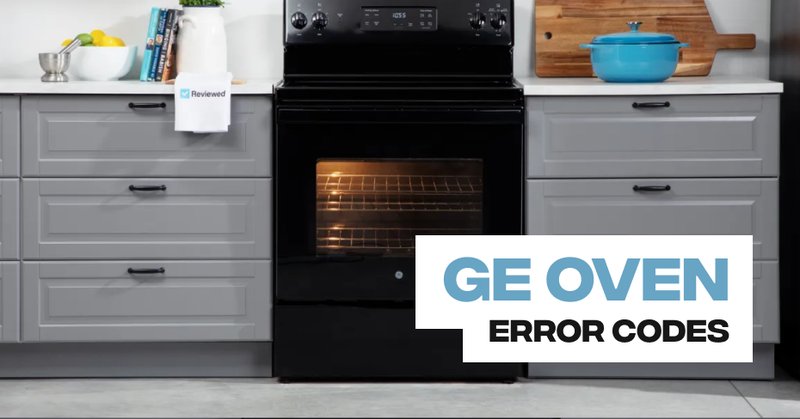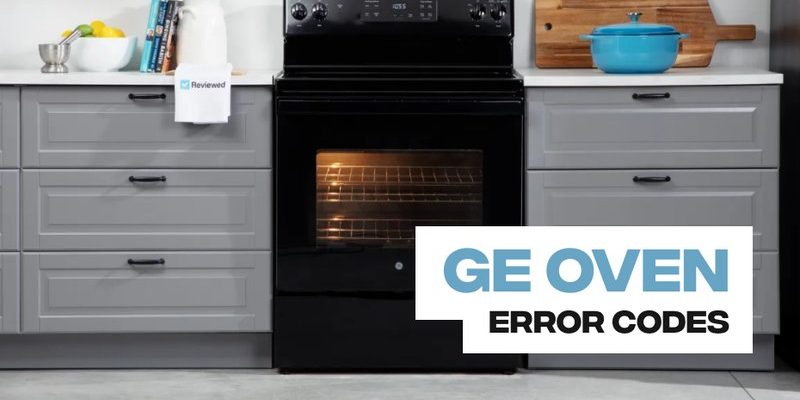
In simple terms, the OE code on your oven or range usually points to an overheating issue. It means the internal temperature has risen beyond the safe operating range. This could be due to a variety of reasons. Think of it like when you’re feeling too hot on a summer day — you might need a glass of water or some shade. Similarly, your oven is signaling that it needs a bit of attention to cool down and function properly again.
Understanding the OE Error Code
When your GE oven displays the OE code, it’s primarily indicating that there’s a problem with temperature regulation. Picture your oven like your home’s HVAC system; it needs to maintain a certain temperature to ensure everything inside cooks evenly. If your oven’s internal sensors detect temperatures that are beyond what is considered normal, the OE code lights up as an alert.
This overheating is often caused by a malfunctioning sensor or a glitch in the control board. Imagine trying to read a broken thermometer — it’s hard to gauge what the actual temperature is! Similarly, if the oven’s sensor isn’t reading accurately, it might incorrectly signal the heating elements to keep running even when they shouldn’t. Sometimes, it could be as simple as a ventilation issue, much like needing to open a window in a stuffy room.
So, what happens next? Well, here’s the beauty of these codes: they prevent further damage by stopping the oven from operating, similar to how your body might make you feel fatigued to prevent overexertion. In doing so, they avert potential risks like undercooked food or, worse, a fire hazard.
Common Causes of the OE Error
You might be wondering, why does this happen? Various factors can trigger the OE error code. One common culprit is a faulty temperature sensor. It’s like having a misfiring nerve in your body, sending incorrect signals about what’s hot or cold. If the sensor’s defective, it might misreport the actual temperature, leading the oven to overheat.
Another potential cause could be the oven’s control board malfunctioning. Think of this as the brain of your oven; it orchestrates the operations based on the data it receives. If this “brain” misfires or receives inaccurate information, it might incorrectly control the heating elements, causing the oven to heat up more than it should.
Ventilation issues can also trigger this error. Your oven needs to “breathe” to maintain a steady temperature. Blocked vents can trap excess heat inside, much like what happens if you close all the windows in your house on a hot day — things get uncomfortably warm pretty quickly. Ensuring that the oven’s vents are clear and unobstructed can often solve this problem.
Steps to Fix the OE Error Code
Okay, so you’ve got this OE code flashing at you — what can you do about it? First, don’t panic. Start by turning off the oven and letting it cool down completely. Think of it as giving the appliance a chance to “catch its breath.” This simple step can often reset minor issues that triggered the error.
Next, check your oven’s temperature sensor. You’ll want to ensure it’s properly connected and in good shape. If you’re comfortable, you can look into testing its resistance with a multimeter (though, don’t hesitate to call a professional if you’re unsure about doing this yourself). A properly functioning sensor should display a resistance reading that’s consistent with the range specified in your oven’s manual.
Finally, consider whether the control board might be the cause. Unfortunately, diagnosing this usually requires a professional, unless you’re quite handy with appliance repair. In some cases, simply resetting the control board by turning the oven’s power off for a few minutes can be an effective solution. It’s like rebooting your computer when it’s acting up — a simple restart can often solve many problems.
Preventive Measures to Avoid Future Errors
Now that you’ve tackled the OE error, how can you prevent it from happening again? Regular maintenance is key. Think of it like keeping your car in good shape by doing regular oil changes and checkups. For your oven, this means routinely checking the temperature sensor and ensuring that ventilation pathways are clear.
Avoid overloading your oven with too many dishes at once, as this can sometimes block air circulation, leading to overheating. It’s like trying to cram too many clothes into your dryer — they won’t dry evenly, and the machine works harder than it should.
Lastly, keeping the control panel safe from spills or moisture is crucial. Just as you wouldn’t pour water over your laptop, ensuring that no liquids come into contact with your oven’s controls helps prevent electrical malfunctions. By taking these simple steps, you can help keep that OE code from making a comeback and enjoy many more delicious moments in your kitchen.
